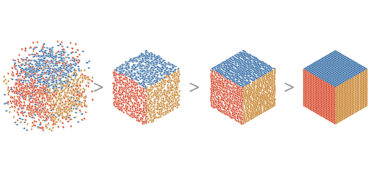To help get at the heart of how the events of the past year will impact payers moving forward, Peregrine Market Access interviewed five national payer formulary decision-makers. Their insights and further research paint a picture filled with issues.
What’s on the Political Horizon?
National polling by the Kaiser Family Foundation (KFF) reveals healthcare was a top issue for voters in the 2020 election. The KFF found wage increases are not keeping up with rising healthcare costs—medical insurance premiums increased 54% while earnings have increased by only 26% since 2009.1
The Biden administration stated it has three priorities when considering where to focus healthcare policy:
- Offer a public health insurance option
- Balance billing protections (surprise increases by health plans for out-of-network service)
- Improve prescription drug price controls (drugs represent approximately 16% of the total healthcare spend, but one in five Americans believes lowering drug prices should be one of Congress’ top priorities)
And one need only look at the hearings held in September 2020 by Rep. Carolyn B. Maloney, the chair of the House Committee on Oversight and Reform, to understand the government’s perspective on the price of pharmaceuticals. “These companies sell medications that are critical to our health and well-being, but their skyrocketing prices are simply unsustainable,” said Maloney.2
This rhetoric came while the average net price for brand-name drugs grew less than 2% in 2017 (net price is the total after factoring in discounts and rebates offered by drug makers).3 Additionally, pharmaceutical care only represents 16.7% of total healthcare spending.4
“We have to drive the costs down. It is a runaway train, and someone has to put on the brakes,” said one national plan medical director we consulted.
But seeking the lowest possible cost ignores important parts of the decision faced by the payer community. The three priorities of healthcare delivery—cost, quality, and access—need not be at odds with each other.
Tension Between Lowering Costs and Raising Quality
Federal healthcare programs and commercial payers are increasingly examining the quality of the services people receive—and adjusting payments accordingly. However, payers do not always agree on which quality measures to track, making it difficult to improve the quality of care and burdening the system with having to report different data to different payers.
It is critical that “value” be at the core of our resource approval conversations. Most decision makers in the care chain interpret “value” to mean “less expensive.” This is not accurate: Value is a combination of clinical benefit and the cost impact of the intervention.
Impact of COVID-19 on Care
Two out of five individuals delayed or missed medical care in the early phase of the pandemic—from March through mid-July 2020.5 Among those who reported needing medical care, 29% indicated fear of transmission of COVID-19 as the main reason for delaying or missing care, while 7% reported financial concerns as their main reason. This resulted in a significant decrease in the amount of care insurers had to pay for.
For commercial plans, the myth of a “windfall” will drive negative perception, but Affordable Care Act limitations on profitability will actually drive those funds back to the members by way of refunds. But for Medicare, Medicaid, and other payers those dollars will be retained. Said one national health plan pharmacy director, “Delaying care isn’t good for anyone. The longer a person waits, the more expensive they become.”
Economic Stress Was Already a Threat
COVID-19 and the lack of economic certainty have put things on hold for a giant part of the country. In one poll, 75% of those surveyed said they have taken steps to adjust their personal finances during the outbreak. Forty-two percent (more than two in five) said they cut monthly expenses, and 26% are delaying major financial decisions. Meanwhile, 22% upped contributions toward savings.6
For the 2021 plan year, the out-of-pocket (OOP) limit for a commercial health plan cannot be more than $8,550 for an individual and $17,100 for a family.7 Those numbers are capped and that is a good thing; however, with the median national family income per household at $68,703,8 a catastrophic illness for a family member in half of the commercially insured families could require paying greater than 12% of their entire income on healthcare, and if that illness were chronic, it would continue. One study demonstrated that this was in fact the case for 43% of insured Americans.9
The average U.S. resident pays $1,122 OOP for healthcare, which includes expenses such as co-payments for doctors’ visits and prescription drugs or health insurance deductibles. Only the Swiss pay more; residents of France and New Zealand pay less than half of what Americans spend.10
Despite significant pressure to help with the OOP requirements, the commercial payer system is actually moving in the opposite direction. For Medicare Part D, expansion of the amount manufacturers can provide to offset the cost to patients has offered relief to many, but CMS has also passed rulings to allow copay accumulator programs, a controversial insurance practice that blocks some OOP assistance payments from counting toward a patient’s annual insurance deductible. Copay tiering is one of the most important tools payers use to incentivize appropriate use for prescription drugs, but accumulator programs frequently impact critically ill patients such as those with cancer, who do not have less costly alternatives to choose from.
The ways in which patients engage with the system can offer an opportunity for payer savings and potential alignment of our new reality with payer preference. For example, telemedicine and home care, desirable sites of care from the payer perspective, have both seen an increase in usage. The number of telemedicine visits rose rapidly in the beginning of the pandemic, then leveled. As people are beginning to return to their doctors, it remains to be seen if there will be a lasting increase in home care/telemedicine. But if there is, these changes would be very positive for payers.
How Many Are Adequately Insured?
Commonwealth Fund’s latest Biennial Health Insurance Survey10 investigated three aspects of the adequacy of insurance coverage in the U.S. for 2020: 1) whether people have insurance; 2) if they have insurance, whether they experienced a gap in coverage in the prior year; and 3) whether high OOP costs and deductibles are causing them to be underinsured, despite having continuous coverage throughout the year. The study found that in the first half of 2020, 43.4% of U.S. adults aged 19 to 64 years were inadequately insured.
However, between the months leading up to the pandemic and the months that followed no statistically significant change in coverage inadequacy was found, but this may change as the pandemic continues. Having insurance does not mean you are adequately insured. This situation is not good for payers either. Underinsured adults are more likely to use urgent care or an emergency room as their principal places of care,11 which are more costly for payers.
It is well documented that uninsured people have poor health outcomes and are more costly to the system.12 It can be expected that when people behave as if they are uninsured because they are underinsured (e.g., by delaying or avoiding care because of financial concerns) it would have the same negative impact on the system. As already noted, delaying care can have significant negative consequences. This problem is exacerbated in the Hispanic and Black adult population, as they have a higher rate of delaying or going without medical care than White adults.
What Prevents Valuable Care?
It is widely recognized that the siloing of healthcare delivery is one of the impediments to improved care coordination and better outcomes. That siloing can happen within a single organization, not just across sites of care.
For payers, disconnects in incentives sometimes drive poor decision-making. For example, a pharma company may develop a better therapy that can prevent costly consequences such as hospitalizations, physician office visits, or other medical interventions, but the Part D (PDP) provider will not suffer the financial consequences of those negative outcomes.
By not facing those negative outcomes, the PDP provider is not incentivized to engage that better therapy. They are only incentivized to do one thing: drive the acquisition cost of all therapies down. This practice sometimes disadvantages the treatments that deliver this additional value to the system. One regional pharmacy director put it this way: “We all strive to provide the best care possible, with the best outcome for the patient, as well as the plan, but these are complicated analyses, and it is very difficult to get unbiased data, and I have a budget to manage.”
One thing we can do is include more stakeholders in the access discussion. Many people are part of the care continuum, each with a different perspective on what is “valuable.” Efforts to include all potential stakeholders will create a more balanced approach to decision-making. A pharmacy director for a top five national payer said, “We talk to community physicians, distribution channel, and even patient groups, and they all provide input.” Unbiased health economics and outcomes research (HEOR) is ultimately at the root of good decision-making.
COVID has upset the apple cart for a while, and the government is making healthcare a top issue. But the pandemic will end for the country, and when we return to a new normal, all the issues that challenged payers before will still exist and require addressing.
References:
1. “Benchmark Employer Survey Finds Average Family Premiums Now Top $20,000.” Kaiser Family Foundation. Published September 25, 2019. Accessed March 20, 2020. https://www.kff.org/health-costs/press-release/benchmark-employer-survey-finds-average-family-premiums-now-top-20000.
2. “Unsustainable Drug Prices: Testimony from the CEOs (Part I).” House Committee on Oversight and Reform. September 30, 2020. Accessed February 24, 2021. Webcast and opening remarks transcript available at: https://oversight.house.gov/legislation/hearings/unsustainable-drug-prices-testimony-from-the-ceos-part-i-and-part-ii.
3. Fein AJ. “The Gross-to-Net Bubble Topped $150 billion in 2017.” Drug Channels. Published April 24, 2018. Accessed February 24, 2021. https://www.drugchannels.net/2018/04/the-gross-to-net-rebate-bubble-topped.html.
4. The Altarum Institute. “Projections of the Prescription Drug Share of National Health Expenditures Including Non-Retail,” May 2018.
5. Anderson KE, McGinty EE, Presskreischer R, Barry CL. “Reports of Forgone Medical Care Among U.S. Adults During the Initial Phase of the COVID-19 Pandemic.” JAMA Netw Open. 2021;4(1):e2034882. doi:10.1001/jamanetworkopen.2020.34882.
6. NEFE/The Harris Poll. “Nearly 9 in 10 say COVID-19 Crisis is Causing Financial Stress.” National Endowment for Financial Education. Published April 16, 2020. Accessed February 24, 2021. https://www.nefe.org/news/2020/04/survey-covid-19-crisisi-causing-financial-stress.aspx.
7. Out-of-pocket maximum/limit. HealthCare.gov. Accessed February 24, 2021. https://www.healthcare.gov/glossary/out-of-pocket-maximum-limit.
8. Semega J, Kollar M, Shrider EA, Creamer JF. “Income and Poverty in the United States: 2019.” U.S. Census Bureau, Current Population Reports, P60-270. Issued September 2020. Accessed February 24, 2021. https://www.census.gov/content/dam/Census/library/publications/2020/demo/p60-270.pdf.
9. Collins SR, Gunja MZ, Aboulafia GN. “U.S. Health Insurance Coverage in 2020: A Looming Crisis in Affordability: Findings from the Commonwealth Fund Biennial Health Insurance Survey, 2020.” Commonwealth Fund. Published August 2020. Accessed February 24, 2021. https://www.commonwealthfund.org/sites/default/files/2020-08/Collins_looming_crisis_affordability_biennial_2020_sb.pdf.
10. Tikkanen R, Abrams MK. “U.S. Health Care from a Global Perspective, 2019: Higher Spending, Worse Outcomes?” Commonwealth Fund. Issued January 30, 2020. Accessed February 24, 2021. https://doi.org/10.26099/7avy-fc29.
11. Amin K, Claxton G, Ramirez G, Cox C. “How Does Cost Affect Access to Care?” Peterson-KFF Health System Tracker. Posted January 5, 2021. Accessed February 24, 2021. https://www.healthsystemtracker.org/chart-collection/cost-affect-access-care/#item-start.
12. McWilliams JM. “Health Consequences of Uninsurance Among Adults in the United States: Recent Evidence and Implications.” Milbank Q. 2009;87(2):443-494. doi:10.1111/j.1468-0009.2009.00564.x.









